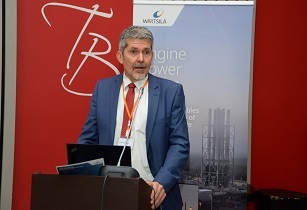Experts from Wärtsilä, speaking at the West Africa Energy Transition Forum in Dakar, shared insights on the impact renewables will have on power system, cost, flexibility, and stability in West Africa
The representatives presented the results of their latest study which investigates Senegal’s optimal power system expansion. The study revealed that speeding up the deployment of renewable energy beyond what is currently planned will lead to a staggering US$700mn of savings until 2035, primarily because of the massive decrease in fuel costs that it will generate. Significant cost savings are also expected in other West African countries that choose to focus investment on renewables, supported by flexible power generation.
Using state-of-the-art power system modelling techniques, Wärtsilä helps energy authorities from around the world to identify and shape optimal energy strategies. The company has acquired considerable experience of African energy markets through the delivery over 200 power plants in 46 African countries, for a total of 7.6GW of capacity.
Wärtsilä presented the findings of a study that assesses the financial and environmental impacts of different renewable energy deployment levels on Senegal’s power system. Senegal’s current plan was compared to a 'High Renewables' plan involving the addition of some 2,100MW of renewables by 2035. Both situations have been modelled in detail with the powerful Plexos software to identify the most optimal power mix for each scenario and compare total system costs.
The study reveals that the scenario featuring a greater deployment of renewable energy in the power system will, by far, be the most affordable and sustainable option. Paired with energy storage and flexible engine power plants to maintain a constant and stable power supply, a larger share of renewable energy will reduce carbon emissions by 30% by 2030 and generate total system savings of US$700mn by 2035. The fuel savings are the main factor in reducing the total cost of the system since renewable energy will partially remove the need to be operate thermal power plants at full load to satisfy demand.
“Our study shows very clearly that maximising low-cost renewable energy is in Senegal’s best interest, both economically and environmentally. We would almost certainly reach the same results, albeit of varying scales, if we were to analyse Guinea, Ivory Coast, or Mauritania’s power systems in similar depth,” said Kenneth Engblom, vice president, Africa § Europe, Wärtsilä Energy.
“Price alone is converting the world to renewable energy,” continued Joonatan Huhdanmäki, market development manager at Wärtsilä. “In 2022, solar power was already the most competitive source of new power generation in most countries of the world, including in Africa. This is a global trend that will continue to accelerate. According to IEA, in order to reach net-zero by 2050 the share of renewable energy should reach 61% by 2030 and a staggering 84% by 2040.”
Understanding high renewable power grids
Balancing power refers to the ability of a power system to maintain a stable and reliable supply of electricity, by matching the electricity demand with the available generation capacity in real-time.
Because renewable energy is intermittent, extra balancing capacity is needed to provide enough flexibility to the power system and ensure grid stability. “The equation for grid stability is rather simple to understand. Every megawatt of intermittent renewable capacity that is installed must be matched with corresponding levels of flexibility in the form of energy storage and balancing power plants, so that we can always match electricity supply and demand,” explained Engblom.
To balance the grid, operators will use two complementary technologies: Flexible engine power plants, which can be quickly ramped up or down to respond to changes in electricity supply, will be used whenever renewable capacity is insufficient to meet demand. Energy storage systems, on the other hand, will store the excess electricity when renewable generation exceeds demand. Both will work together to keep the grid safe and stable.
The path to carbon-free power systems
The path to decarbonisation of the energy system is rather similar everywhere in the world. The first step is to add the right mix of renewables, balancing power plants, and storage capacity, while phasing out inflexible power plants. The second step is to convert the flexible engine power plants running on natural gas to run on sustainable fuels, at which stage the power system will no longer need fossil fuels at all.
“Decarbonisation is totally feasible with the current technologies we have, and contrary to popular belief, it’s not going to cost more: it’s going to cost less,” concluded Marc Thiriet, director, Africa, Wärtsilä Energy. “We have got wind and solar technologies. We have storage technologies and flexible engine power plants for grid balancing. And we have sustainable fuels that we will use to run the balancing power plants when these fuels become more broadly available.”





















